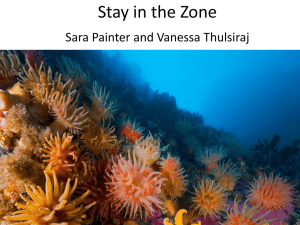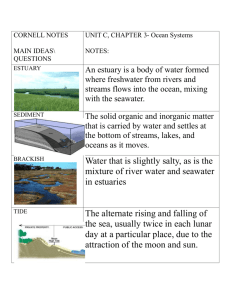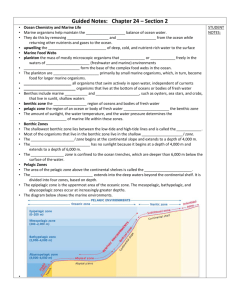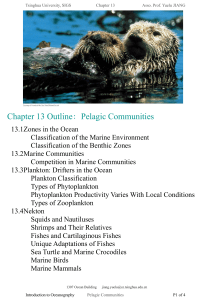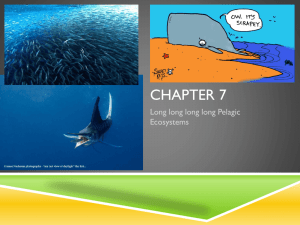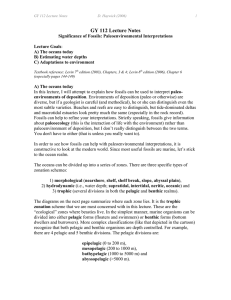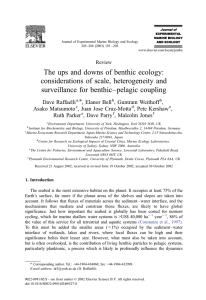Marine Environments
advertisement
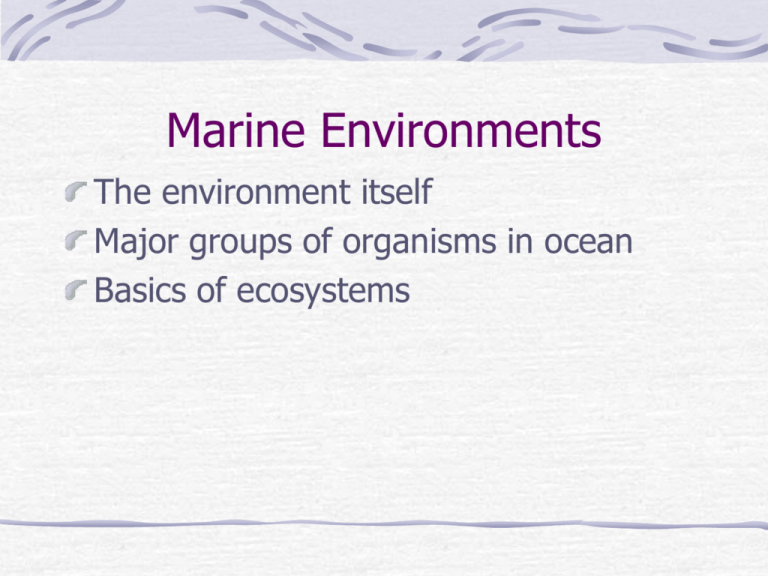
Marine Environments The environment itself Major groups of organisms in ocean Basics of ecosystems Environments Pelagic……the water Benthic…..the bottom Neritic Nearshore Shallower than 200m Omit many details here Neritic 200 m Oceanic Away from continental shelf Depth zones Oceanic provinces Epipelagic Surface down to 200m Mesopelagic 200-1000m Bathypelagic 1000-4000m Oceanic Epipelagic 200 m Mesopelagic 1000 m Bathypelagic 4000 m Light zones in ocean Euphotic Light for photosynthesis Usually 0-100 m Aphotic Without light Deeper than 1000 m Benthic Environment Similar zones as pelagic Omit details and new names Organisms (in general) Plankton: floaters Many varieties Nekton: swimmers Won’t deal with these in this course Benthos: bottom dwellers A few varieties Plankton Phytoplankton Carry on photosynthesis Diatoms, coccolithophores, dinoflagellates PHYTOPLANKTON Plankton (2) Zooplankton Consumers Radiolarians, forams, others ZOOPLANKTON Plankton (3) Meroplankton Part of life as a plankton Part of life as nekton or benthos Examples (oysters, barnacles, crabs, fish egg) Plankton (4) Holoplankton Whole life in planktonic form Examples (diatoms, for instance) Benthic organisms Epifuana Lives on top of sediments Examples (barnacles, starfish, crabs) Infauna Lives within sediments Examples (clams, worms) Epifauna Infauna (a, b, c, e) Distribution of life Land vs. sea Benthic vs. Pelagic Why these patterns? Land 86% Sea 14% Benthic 98% Pelagic 2% Making a living in the ocean Food chains and food webs Primary productivity, respiration, decomposition Depth zone differences Relationship between resources and numbers of organisms Differences between “climate” zones Food webs and chains Primary productivity Photosynthesis carbon dioxide + water sugar + oxygen Chemosynthesis hydrogen sulfide + water + oxygen + carbon dioxide sugar + sulfuric acid Respiration and decay Basically the opposite of photosynthesis Releases nutrients back into the ocean Uses oxygen (consider other sources of oxygen to the ocean) Oxygen with depth (red) Nutrients with depth ( green) Example of primary producers Algae Diatoms Coccolithophores Dinoflagellates Basis of food webs and ecosystems Variations in productivity verses latitude Photic zone important for photosynthesis Some areas of ocean are light limited, some are nutrient limited, some are both Pictures can tell the story of relationships ……….

